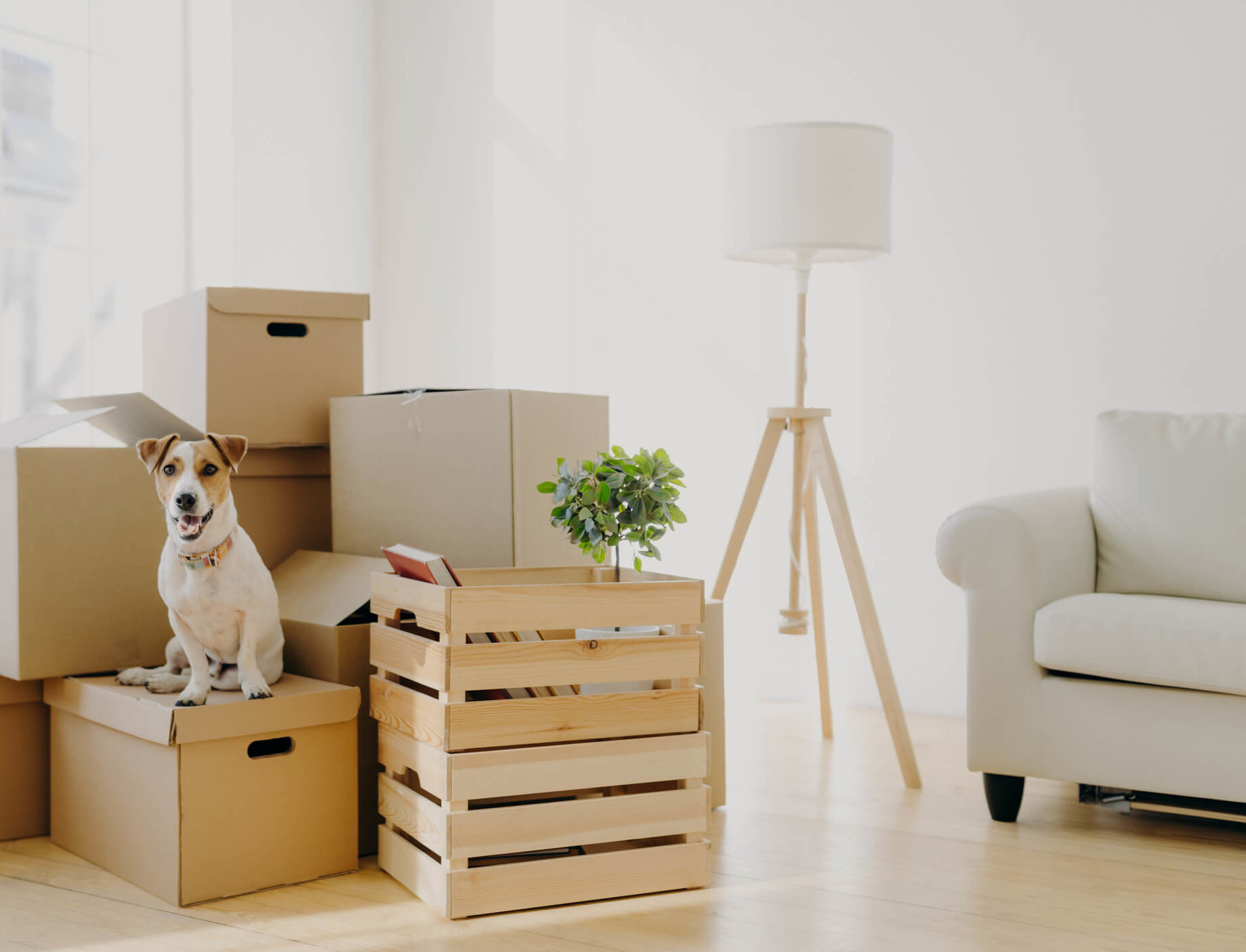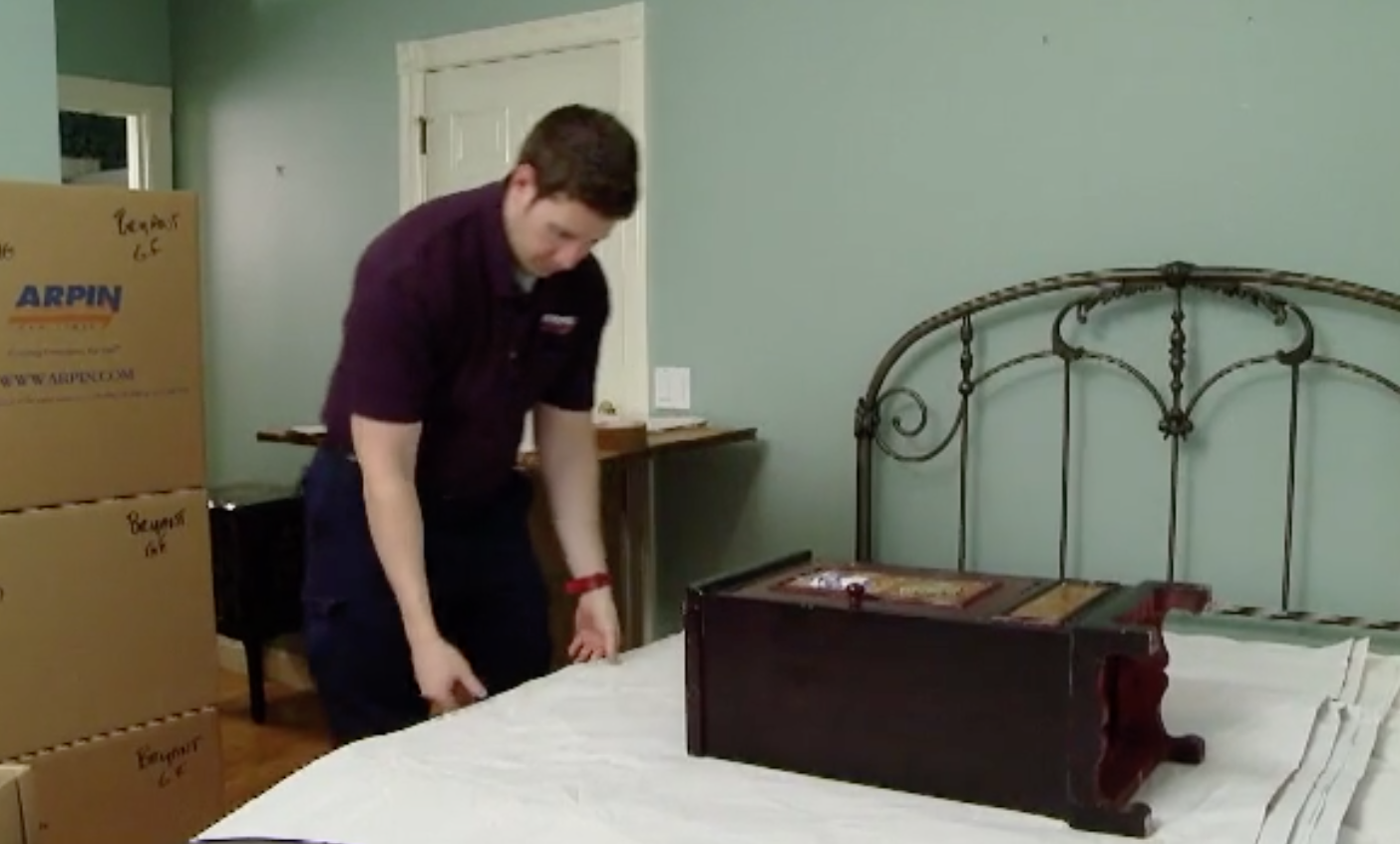Ground Rules and Background Info About Packing
The ground rules for packing
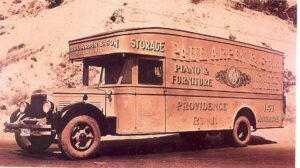 Arpin RI understands that packing cartons for a move is not “rocket science” or “brain surgery”. However, packing involves a moderate level of skill, experience, judgment, and understanding to do it well. Without these traits, even packing simple items can turn out to be a disaster. Since Arpin RI has been in the packing business for over 120 years, we have learned a thing or two along the way to help customers who are packing their own things.
Arpin RI understands that packing cartons for a move is not “rocket science” or “brain surgery”. However, packing involves a moderate level of skill, experience, judgment, and understanding to do it well. Without these traits, even packing simple items can turn out to be a disaster. Since Arpin RI has been in the packing business for over 120 years, we have learned a thing or two along the way to help customers who are packing their own things.
Two overarching ground rules in packing:
- Do no damage; to yourself or any of your things.
- Everything you do in your old home should be done with the intent of making the setup in your new home as smooth and efficient as possible.
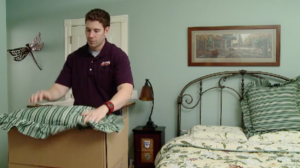 Prioritizing what is packed first and what is packed last.
Prioritizing what is packed first and what is packed last.
Professional packers from Arpin RI typically pack immediately before the move -either the day before or the day of the move. Using this strategy, customers have just a handful of items that may be essential to them at this point; their beds, maybe a lamp or two, a coffee maker, TV, or bathroom items.
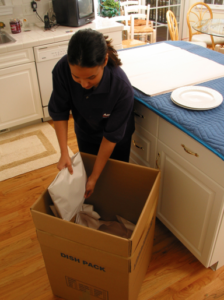 For most of our customers, self-packing is spread out over days, weeks, and in some cases months. That means that customers will have to make a lot of guesses to determine what they may need in the time leading up to the move. Unfortunately, customers guess wrong many times and end up unpacking cartons looking for needed items already packed away. The underlying priority rule used by the professionals is to pack the least essential items first and the most essential items last.
For most of our customers, self-packing is spread out over days, weeks, and in some cases months. That means that customers will have to make a lot of guesses to determine what they may need in the time leading up to the move. Unfortunately, customers guess wrong many times and end up unpacking cartons looking for needed items already packed away. The underlying priority rule used by the professionals is to pack the least essential items first and the most essential items last.
Your goals should be to mimic the professional packers at Arpin RI…nibble away at the non-essential items in the days and week before the move. Leave just the essentials so they can be packed the day before the move in one fell swoop.
Here are some tried and true recommendations to identify essential and non-essential items.
- The first thing to do is to sit down with a calendar and identify any dates where you have appointments with teachers, doctors, lawyers, the DMV, whomever. There may be documents, papers, special clothing, hardware, or other supplies that will be needed. These items should be identified now and separated.
- If you think you “might” need an item, always err on the side of keeping it out rather than packing it.
- Look through drawers and closets to remind yourself of items that you may have forgotten about. Be on the lookout for wires, cords, and parts of critical items as you proceed.
- Identify what items are very much out of season. Holiday dishes won’t be needed in July nor will winter coats or boots.
- Identify items that belong to someone who is away at school or traveling. Typically, those items are safe to pack.
- Areas like dining rooms and guest rooms are almost exclusively non-priority areas just before a move.
- Tackle storage areas like attics, basements, and garages that contain items with little likelihood for imminent usage.
Rules for maintaining order and organization with the pack
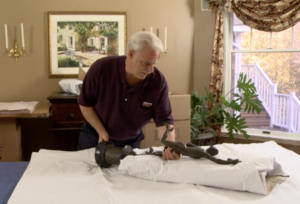 When a residence is being packed, it is by definition being literally disassembled item by item. Unless you’re working almost continuously to maintain order, things can quickly get out of hand. Items can be knocked over or misplaced in the chaos of a disorganized pack. There are certain procedures that you can use to maintain order and organization as you pack.
When a residence is being packed, it is by definition being literally disassembled item by item. Unless you’re working almost continuously to maintain order, things can quickly get out of hand. Items can be knocked over or misplaced in the chaos of a disorganized pack. There are certain procedures that you can use to maintain order and organization as you pack.
Checklist of things to do before you start packing in any room
 Have a place for your trash. The first thing you should do when you start to pack is to have an empty carton or bag for trash. Empty rolls of tape, the plastic banding from bundles of packing, and the miscellaneous old packing materials items should be immediately thrown away in the trash box.
Have a place for your trash. The first thing you should do when you start to pack is to have an empty carton or bag for trash. Empty rolls of tape, the plastic banding from bundles of packing, and the miscellaneous old packing materials items should be immediately thrown away in the trash box.
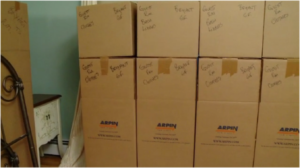
- Have a plan where full cartons will be stacked before you start packing. Always stack cartons of similar dimensions on top of each other. Make sure the cartons are neatly aligned on top of each other. Always follow the fundamental rule of moving; heavy cartons on the bottom and lighter cartons on top. Keep stacks of packed cartons in straight rows. Always face the labeling out so the cartons can be inventoried easily.
- Pack in a systematic fashion. Your approach should be a coherent step-by-step process. You should work in a logical, linear fashion throughout the room. Do not bounce around the room in a haphazard way.
- Pack similar groups of articles at the same time. For example, all of the knick-knacks, then all of the books, then all of the clothes….etc
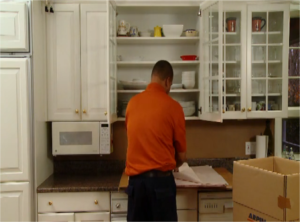 Handle items the least amount possible before they’re packed. Whenever possible, it’s always preferable to pack items directly out of the cabinets, drawers, or shelves that those items are store in.
Handle items the least amount possible before they’re packed. Whenever possible, it’s always preferable to pack items directly out of the cabinets, drawers, or shelves that those items are store in.
- Pack in a balanced fashion. Don’t leave the hardest things to the end. An undisciplined packer will choose to pack all of the easy items first, and eventually bog down as they plod through all of the difficult items at the end.
 Choose the smallest carton available so it contains the fewest number of items possible. Large cartons with huge numbers of items are extremely discouraging to unpack. Try to use smaller cartons when packing areas with many smaller items like bathrooms, kitchens, and workshops.
Choose the smallest carton available so it contains the fewest number of items possible. Large cartons with huge numbers of items are extremely discouraging to unpack. Try to use smaller cartons when packing areas with many smaller items like bathrooms, kitchens, and workshops.
- You must position your packing and wrapping station the appropriate distance from the items being packed; close enough to be efficient, but not so close it interferes with your mobility.
Understanding the relationship between packing efficiency and packing quality
 W. Edwards Deming is the worldwide father of the concept of quality control in modern manufacturing. He taught his students that the efficiency of the manufacturing process has the greatest effect on the overall quality of that item. Keeping materials and personnel constant, Deming realized that highly efficient manufacturing processes tend to produce items of high quality, and inefficient processes tend to produce a poor quality item.
W. Edwards Deming is the worldwide father of the concept of quality control in modern manufacturing. He taught his students that the efficiency of the manufacturing process has the greatest effect on the overall quality of that item. Keeping materials and personnel constant, Deming realized that highly efficient manufacturing processes tend to produce items of high quality, and inefficient processes tend to produce a poor quality item.
 While manufacturing and packing cartons may seem dissimilar processes at first glance, they are actually quite similar. Both share the same structure; quality is obtained by the efficiency of all of the processes required and the efficiency of the process is obtained by analysis and understanding of those processes.
While manufacturing and packing cartons may seem dissimilar processes at first glance, they are actually quite similar. Both share the same structure; quality is obtained by the efficiency of all of the processes required and the efficiency of the process is obtained by analysis and understanding of those processes.
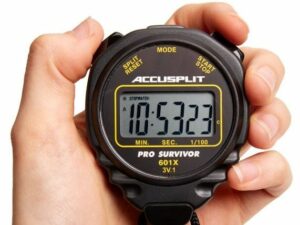 The loss of packing quality due to inefficiency is not caused by a single inefficient event or even a series of several inefficient events. Rather, the loss of packing quality is usually caused by thousands of micro-inefficiencies that combine together to ruin the entire process. The reason a room that took two hours longer to pack than it should have is not because of a single two-hour delay, or because of eight 15-minute delays. Rather, the delay was due to the inefficiency of a process that was done a thousand times and that took seven seconds too long every time.
The loss of packing quality due to inefficiency is not caused by a single inefficient event or even a series of several inefficient events. Rather, the loss of packing quality is usually caused by thousands of micro-inefficiencies that combine together to ruin the entire process. The reason a room that took two hours longer to pack than it should have is not because of a single two-hour delay, or because of eight 15-minute delays. Rather, the delay was due to the inefficiency of a process that was done a thousand times and that took seven seconds too long every time.
 Understanding that the activity you perform most often is the activity that will cause the greatest delays if it is done inefficiently. Since wrapping items in paper is your number one packing activity, improving the efficiency of your wrapping process is the single best way to improve the quality of your packing.
Understanding that the activity you perform most often is the activity that will cause the greatest delays if it is done inefficiently. Since wrapping items in paper is your number one packing activity, improving the efficiency of your wrapping process is the single best way to improve the quality of your packing.
Creating an ergonomic wrapping station to increase packing efficiency
When you’re working in the kitchen, it is OK to use the countertop as your wrapping station. However, in all other areas, Arpin of RI recommends creating a portable wrapping station using ordinary packing materials that you have on hand
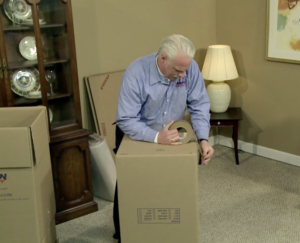 The base of the wrapping station should be a single carton or set of cartons that are at the same height as the packer’s waist.
The base of the wrapping station should be a single carton or set of cartons that are at the same height as the packer’s waist.
Next, add a sturdy cardboard working surface approximately the same size as the paper on top of the base using 2 or 3 empty carton.
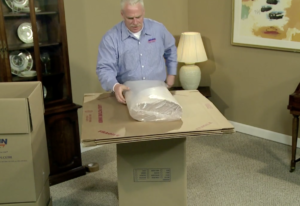 Finally, the wrapping paper (newsprint) should be placed on top of the working surface.
Finally, the wrapping paper (newsprint) should be placed on top of the working surface.
 Never work on a low surface or off the floor. The height of the wrapping surface should be the same as your waist to avoid unnecessary back fatigue from constant bending. You may have to wrap thousands of items, so spending a few moments to create an ergonomic working area will save you time, energy, and certain back pain.
Never work on a low surface or off the floor. The height of the wrapping surface should be the same as your waist to avoid unnecessary back fatigue from constant bending. You may have to wrap thousands of items, so spending a few moments to create an ergonomic working area will save you time, energy, and certain back pain.
 Proper positioning of the paper wrapping station inside the room
Proper positioning of the paper wrapping station inside the room
The wrapping station should be set up near the items that will be packed but not positioned in such a way that it traps you and interferes with your movement around the room. The ideal positioning scenario is to position yourself with the items that you’ll be packing are adjacent to your left hip, the carton that you’ll be packing those items into is next to your right hip, and the wrapping station should be centered right in front of you.
 If you’ve positioned yourself properly, your torso should swing through an arc of 180° as you grasp the item on your left, wrap it in the center and then place it in the carton on your right. (Reverse this if you’re left-handed) Ideally, you should do all of this with minimal foot movement. Movers call this “dancing in a phone booth”.
If you’ve positioned yourself properly, your torso should swing through an arc of 180° as you grasp the item on your left, wrap it in the center and then place it in the carton on your right. (Reverse this if you’re left-handed) Ideally, you should do all of this with minimal foot movement. Movers call this “dancing in a phone booth”.
Proper positioning and elevation of the carton that you’re packing
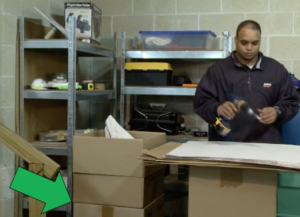 The carton that you’re packing should be adjacent to the wrapping station. This carton should be elevated to a comfortable working height on an upside-down, empty carton or on a fully packed, sturdy carton. Never work off the floor; it is too low and you will wear out your back muscles prematurely
The carton that you’re packing should be adjacent to the wrapping station. This carton should be elevated to a comfortable working height on an upside-down, empty carton or on a fully packed, sturdy carton. Never work off the floor; it is too low and you will wear out your back muscles prematurely
Proper positioning of the export wrapping station
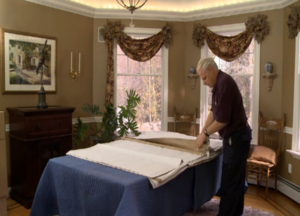 Because export wrap’s dimensions are similar to a dining room table top or a bed, those two areas are the most logical places to set up the export wrapping station. Always cover any bare tale top with a blanket or moving pad to ensure it is not damaged by the export wrap. Unfold several sheets of the wrap on the table so you have a smooth level surface to wrap lamps, stereos, statues, or other large items.
Because export wrap’s dimensions are similar to a dining room table top or a bed, those two areas are the most logical places to set up the export wrapping station. Always cover any bare tale top with a blanket or moving pad to ensure it is not damaged by the export wrap. Unfold several sheets of the wrap on the table so you have a smooth level surface to wrap lamps, stereos, statues, or other large items.



